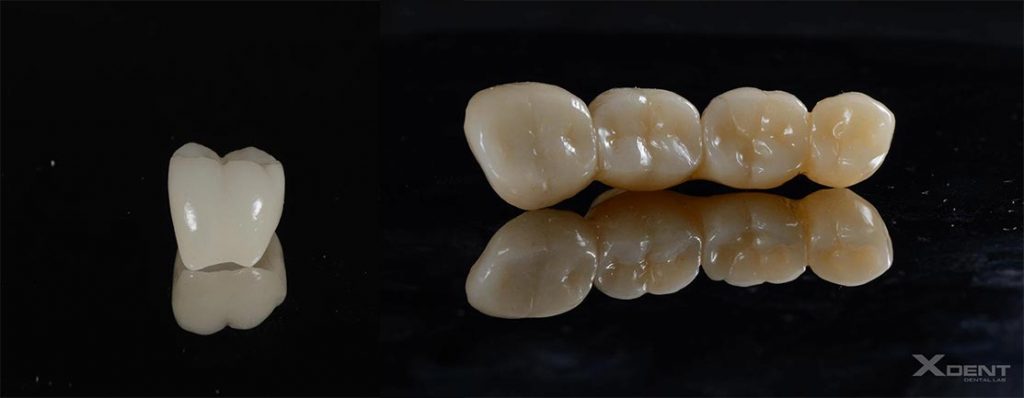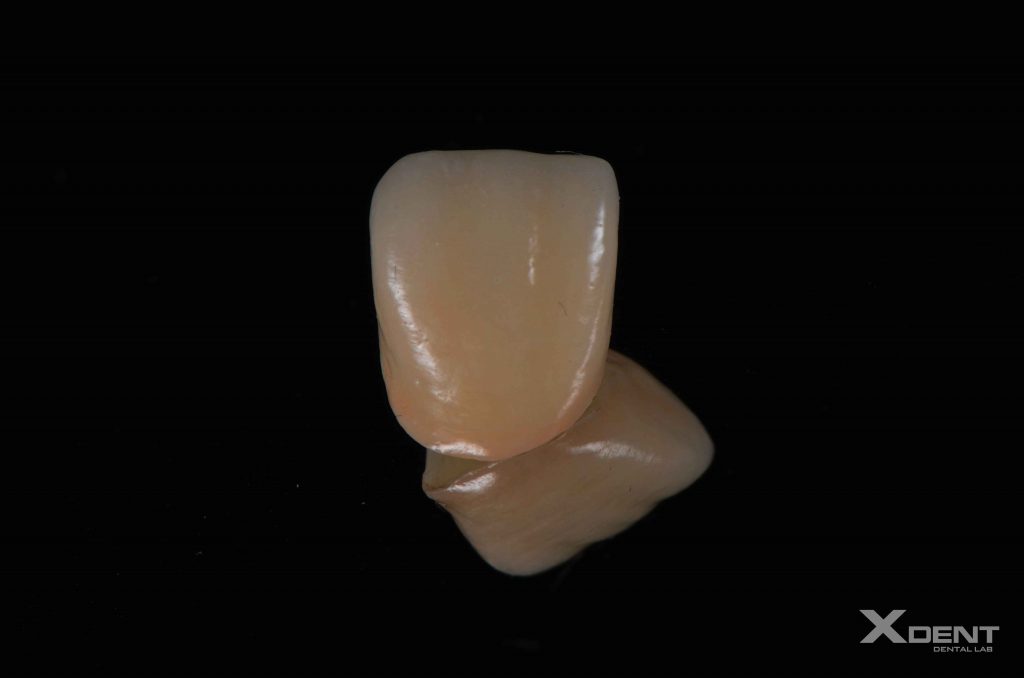Porcelain Crown and Bridge are traditional dental treatment methods for all patients. They are commonly used to restore the aesthetics of teeth and chewing function. Porcelain crown and bridge will have their advantages and disadvantages. The following information will help you understand
more about two of these methods.
I. Why you should get a new crown or bridge?
•The condition of prolonged tooth loss will affect the aesthetics of the face
• Affect the chewing function of the teeth as food is not completely crushed before digesting cause affect the stomach
• Easily cause the gum and tooth decay for other teeth because the food gets stuck in the unhygienic vacant position for the long term.

II. Porcelain Bridge
1. What is a porcelain bridge?
A porcelain bridge consists of two dentures attached to 2 tooth pillars and one or more dentures located between these two dentures. A bridge is a solution that restores the tooth by replacing one or more teeth that are no longer by bridging between the two teeth, helping the solid bridge attached with adjacent healthy teeth. A porcelain bridge is a permanent restoration, and the patient cannot remove it by themselves. Only the dentist can remove it.
2. When the patient should use a porcelain bridge?
The dentists usually recommend a porcelain bridge when their patient no longer has one or more teeth. The porcelain bridge in this case will become a bridge between two lost teeth.
3. Types of porcelain bridges?
a. Conventional Bridge
Consider the most common type of bridge when the teeth on either side of the missing tooth are healthy and normal. A traditional porcelain bridge consists of two crowns placed on the pillars on both sides and in the middle, connecting dentures to replace missing teeth.

b. Cantilever Bridge
This type of bridge uses only a crown attached to the natural tooth to support the denture bridge. However, this type of bridge is usually not recommended because the strong bite force will affect the natural teeth. You can make this type of bridge for missing front teeth.

c. Maryland Bridge
Like a traditional bridge, a Maryland bridge also requires two natural teeth on either side of the missing tooth. The difference lies in the fact that a Maryland bridge uses a metal or porcelain frame to attach to the back of two adjacent teeth. This type of bridge is mainly used for anterior teeth and healthy natural teeth.

d. Bridge supported by the implant
Usually, the doctor will place an implant for each position of the missing tooth, but if that is not possible, you can choose a type of porcelain bridge with implant support to make the teeth on both sides of the bridge. This type of bridge will not affect the natural teeth and is considered the most stable method.

4. The advantages and disadvantages of porcelain bridges
| Advantages | Disadvantages |
| – Provide the best and most natural in shape and color – Life expectancy can be up to 15 years old | -The bacteria will grow if you do not know how to clean the teeth properly. |
III. Porcelain Crown
1. What is a porcelain crown?
Porcelain crowns are used to cover the damaged tooth. Porcelain crowns help to increase the strength of teeth and help improve the color, shape, and arrangement of teeth. Today, porcelain restorations are favored by customers because the hardness and aesthetics are higher than the restorations of other materials
2. When you should use a porcelain crown?
The dentist may recommend a porcelain crown for some reasons:
- Protect a weak tooth (possibly from decay)
- Restore a broken tooth or a severely worn-down tooth.
- Cover and support a tooth with a large filling and not much tooth remaining.
- Cover misshapen or severely discolored teeth and a dental implant
3. Types of porcelain crowns
a. PFM crown
Porcelain-fused-to-metal (PFM) crowns are another widely used type of dental crown. They are known well for over 50 years. PFM crowns provide strength ( the structure from metal) and aesthetics ( the cap covered by porcelain). The disadvantage of PFM crowns is the metal may cause a grey line at the gum line that may not give the 100% aesthetic look that all-porcelain crowns provide.
b. Zirconia crown
Zirconium is a relatively new material that becomes a more popular choice. Zirconia crown provides a great aesthetic, strong and long-lasting, not likely to cause allergic reactions because there is no metal in crowns.

c. Emax crown
Emax is a type of all-ceramic crown made of lithium disilicate. The main advantages of E-max crowns are great aesthetics, durable and very strong, and provide a great choice both for front and back teeth. However, they could be more expensive than other types of crowns.

4. The advantages and disadvantages of porcelain crowns?
| Advantages | Disadvantage |
| – Provide the best and most natural in shape and color – Toxic-free as no metal is used – The best option for anterior restorations – Life expectancy can be up to 15 years old | – Not strong as metal crown – Need to be well-taken care – More costly than other types of crowns |
The aesthetic crown and bridge with good quality and price will bring satisfaction to customers. At Xdent, we are committed to bringing quality dental and bridge products that meet dental aesthetic standards, bringing more profits to our partners. Let’s start your business with us at: www.xdentcenter.com
Author: Xdent team

Comments
Post a Comment